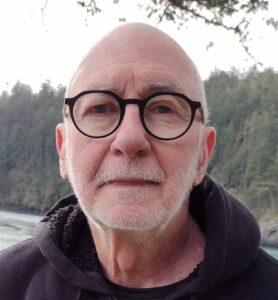If you’re a sensitive person living in a Tibetan monastery, you can most likely ignore this post and the need for additional self-regulation skills. On the other hand, if you’re involved in the world, a householder, with all the daily challenges that life inevitably presents, it’s guaranteed that you’ll be emotionally triggered periodically.
The goal, as I see it, is not trying to avoid being triggered. The goal isn’t to avoid basic human emotions like anger or fear but to experience them, move through them more gracefully and less reactively, and maybe learn something about ourselves from the experience.
So, the idea isn’t to avoid being upset but to have the self-regulation tools and the supportive neurology to restore our equanimity, our emotional baseline, more fluidly.
Once we’re triggered, we tend to react in predictable ways. From an autonomic nervous system perspective, we tend to react by running, fighting, withdrawing, even submitting, or a combination of those behavioral states.
You can consider which of these reaction styles is most familiar to you personally.
Regardless of your learned reaction style, it’s still a reaction that’s taking you out of the present moment and particularly out of your prefrontal cortex. This is the part of your brain that supports you in being your best non-reactive self, where you’re understanding, forgiving, kind, and, of course, assertive as well.
One of the values of a regular self-regulation practice is that you become more aware of bodily felt experience. It was Candace Pert, Ph.D., who said that your body is your subconscious mind. If she’s right, then enhanced bodily awareness of feelings gives you real time access to unconscious processes.
This gives us an opportunity to update these unconscious processes that, if left unchecked, continue to keep us stuck in old survival programming.
A Self-Regulation Practice for Returning to Equanimity
Aside from your regular practice, whatever that may be, here’s a very brief, in-the-moment self-regulation practice that you can employ whenever you’ve been triggered emotionally.
This process helps you to neutralize the triggers, especially when practiced over time, so that you’re able to stay more emotionally centered, grounded, and resilient. And when you are triggered, yes that will still happen, you’ll have the ability to more confidently and consciously shift into a more balanced state more quickly and dependably.
Here’s a process that I use regularly:
When you become aware that you’ve been triggered emotionally …. pause for a beat … and remember to breathe. Just breathe with a conscious awareness of your body. You may feel the breath in your chest, or your nose, or somewhere else. It doesn’t matter where you feel it as long as you’re noticing bodily sensations. That’s the key to shifting what your brain is doing. Noticing your body helps to get you out of your head and old, learned reactivity patterns.
That’s it, just catch yourself having been triggered or upset, and then shift to your body and your breath. That shift from head to body is a huge neurological change, that especially when practiced over time, will help you recover your baseline equanimity faster. This process will become even more helpful if you’re employing a regular self-regulation practice that’s conditioning your brain on a regular basis over time.
If you’re interested in a more structured process you can experiment with a HeartMath technique.
The folks at the HeartMath Institute have developed the Freeze-Frame Technique for enhancing Heart-Brain coherence in support of greater autonomic nervous system balance and emotional equanimity. You can download the written instructions and worksheet here.
Additionally, you can have a guided, direct experience of the process in this 5-minute video.

